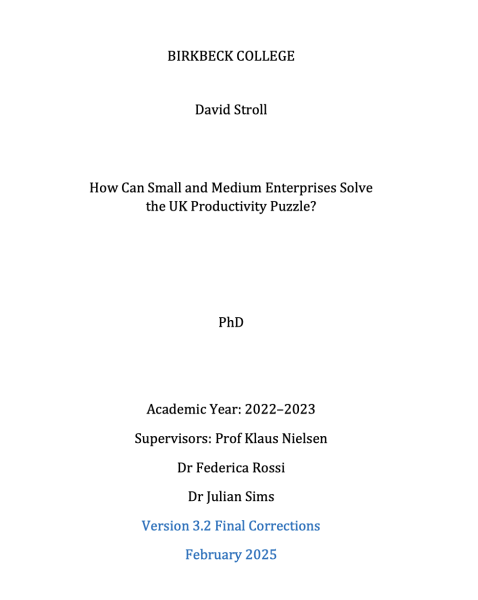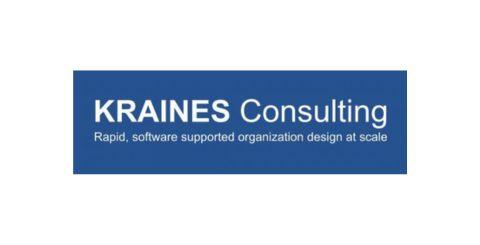How Can Small and Medium Enterprises Solve the UK Productivity Puzzle?

Obtain this book
To download a digital copy of this book for free
You need to register for a free GO Society web site account if you don't already have one at https://globalro.org/user/register. Then log into your account at https://globalro.org/user/login. Next, return to this page and you will be able to see and download the file.
Title: How Can Small and Medium Enterprises Solve the UK Productivity Puzzle?
Author: David Stroll (Birkbeck College, 2025)
Supervisors: Prof. Klaus Nielsen, Dr. Federica Rossi, Dr. Julian Sims
Background & Problem
Since 2008, UK productivity growth has stagnated—Total Factor Productivity (TFP) rising only 0.7% annually (down from 2%). Consequences include flat wages, high debt, low investment, and weak economic growth. The productivity shortfall disproportionately affects SMEs (20–250 employees), which comprise ~1/6 of the UK economy but suffer from:
-
Low gross value added (GVA) per employee
-
Weak management practices
-
Minimal use of digital tools & R&D
Research Question
How can SMEs address the UK’s productivity crisis and shift from the “long tail” of underperformance to become engines of growth?
Methodology
A 3-year longitudinal case study of Neatsmith Ltd, a 78-person bespoke furniture manufacturer. The researcher embedded a digital productivity platform (Opagio) and tracked improvements across marketing, sales, and manufacturing “production units.”
Theoretical Contributions
-
New Framework: Reframes productivity around work activities, work objects, and production units—the actual loci where inputs become outputs. Contrasts with traditional macroeconomic or task-based models.
-
Production Units as Locus of Change: Different units (e.g. sales vs. manufacturing) require distinct complementary investments. Performance must be tracked at unit level—not firm level—for targeted growth.
-
Software Platform: Developed a modular “KnowledgeGrid” system to track, quantify, and improve productivity. Unlike rigid ERP systems, it supports flexible work activity mapping, role assignment, and real-time TFP measurement.
Neatsmith Case Findings (2021–2024)
-
Labour productivity (GVA/employee) rose from £48,230 to £69,644 (+44%)
-
EBIT increased from £270K to £2.035M
-
TFP-driven profit (TFP EBIT) rose from £0 to £1.08M
-
Valuation quadrupled from £1.75M to £6.99M
-
Company moved from 6th to 4th productivity decile nationally
Key Practices Implemented
-
Work Activity Maps for each production unit
-
Digitized and measured sales quotes, manufacturing cycles, marketing leads
-
Reorganized operational schedules and installation planning
-
Invested in staff training, new equipment, showroom upgrades
-
Created a Growth Balance Sheet linking investments to productivity outcomes
Broader Insights
-
Complementary investments (in tech, people, tools) must align with unit-specific needs
-
Productivity improvements come from daily operational decisions—not just macro policy
-
National statistical agencies should adopt firm-level TFP and GVA metrics
-
SMEs need accessible digital platforms to measure and act on productivity drivers
Conclusion
SMEs can be central to solving the UK productivity puzzle, but only if provided with the tools, measurement frameworks, and cultural incentives to continuously improve how work is done. Stroll’s thesis offers both a theoretical advance and a tested, replicable practice model.





